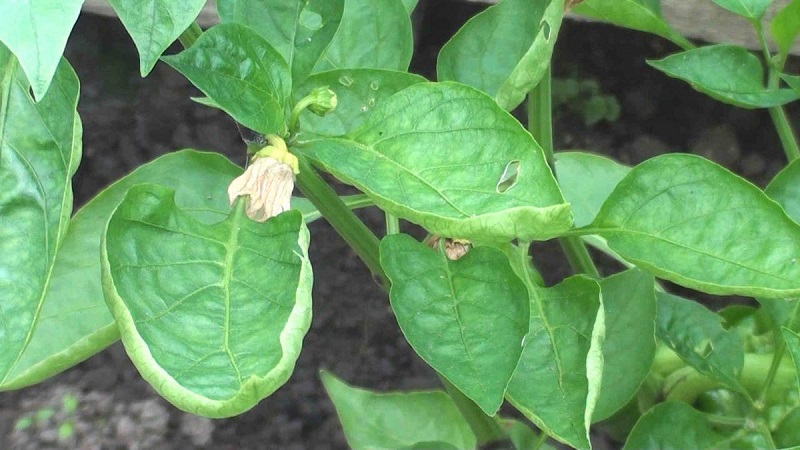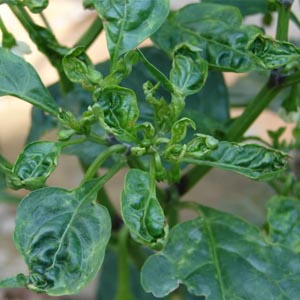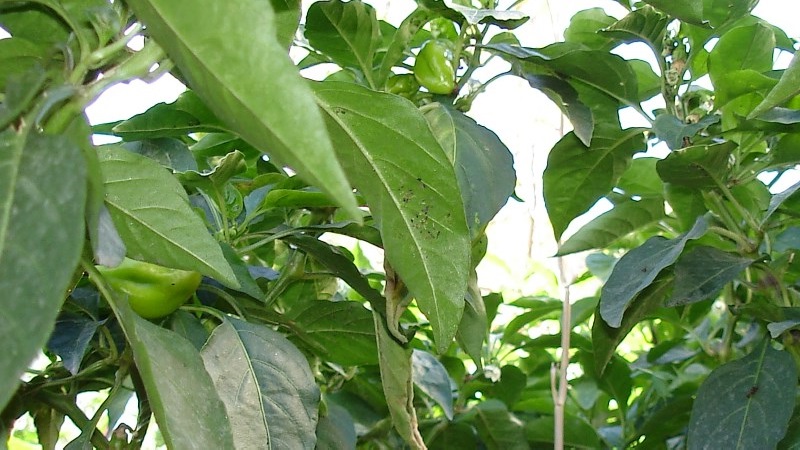Why do pepper leaves curl and what to do about it
Pepper is a rather whimsical culture. This should not be forgotten when growing pepper seedlings at home, since strong seedlings are the key to a good harvest. It must be watered correctly and in a timely manner, fed and maintained at a temperature. Also, the quality of plants is influenced by the composition of the soil and the quality of the seeds.
It happens that it seems that all the conditions for growing pepper are met, but its leaves begin to curl, which can lead to the death of the plant and cause crop failure. Let's figure out why the leaves of the peppers curl and what to do about it.
The content of the article
Reasons why peppers curl leaves
After the cotyledon leaves fall off, the pepper enters the phase of active growth.... During this period, the plant requires the most careful and proper care (watering, feeding), protection from pests and diseases. Rolling of leaves at this time occurs for several reasons.

Insect (pest) attack
A spider web that appears on the leaves is a sign that the peppers were attacked by a spider mite.... In rolled leaves, he hides his offspring, which interferes with normal photosynthesis and growth of pepper. Spider mite larvae, feeding on plant sap, damage its root system. All this leads to the fact that the plant becomes weak and dies.
Aphids settle on leaves in whole colonies... It can be yellow, white, or green. It feeds on aphids on leaf juice, as a result of which they weaken and curl up. A sticky coating appears on them, which is secreted by the parasite. Pepper infection occurs when the seedlings are transplanted into open ground. Ants who love the secret secreted by aphids populate it on pepper leaves.
Pimples that appear on the leaves indicatethat a scabbard attacked the pepper. This insect, covered with a waxy shell, sucks sap from the leaves. They become stained and discolored.
It can be useful:
Step-by-step instructions for growing pepper seedlings
Diseases
 Pepper can be susceptible to both fungal and viral diseases., which are activated at elevated temperature and humidity.
Pepper can be susceptible to both fungal and viral diseases., which are activated at elevated temperature and humidity.
The first symptoms of top rot (viral disease) is the folding of a leaf at the top of the plant. And if this disease is not stopped in time, it will infect the fruits of the pepper.
Twisting of the upper leaves also occurs with verticillium... The leaf turns yellow and falls off. The plant does not grow and the fruits do not ripen.
With phytoplasmosis, pepper leaves grow small... Curl up, bend up, turn yellow and fall off. And the fruits of the pepper do not ripen.
Growth anomaly
It happens that the middle vein of a leaf is ahead of the entire leaf plate in growth., as a result of which the leaves curl, fold in a boat. This occurs in young, growing peppers. This abnormal growth can be caused by a lack of light. This does not harm either the plant or the crop; over time, the leaves are aligned.
Failure to comply with growing conditions
In addition to the lack of light, the leaves of the culture can curl up if watering is incorrectif the temperature regime is not observed. Therefore, it is important to comply with all agrotechnical requirements for growing pepper. Twisting can occur with a lack of potassium and phosphorus.
In the case of a lack of potassium in the soil, the pepper leaves are deformed regardless of their location. If the leaf is curled and turned blue, then this indicates a lack of phosphorus.
What to do
First you need to find out the reason for the deformation of the sheet.and then grapple with a specific problem.
Pest control
 If the leaves are curled, and bumps, holes, cobwebs or plaque appear on them, which means that harmful insects attacked them. They can be seen when inspecting plants.
If the leaves are curled, and bumps, holes, cobwebs or plaque appear on them, which means that harmful insects attacked them. They can be seen when inspecting plants.
While there are few pests, they are disposed of by physical measures.:
- collect by hand (for example, a shield, since drugs do not penetrate under its protection);
- wash off with warm water;
- wipe or rinse the leaves with a solution of laundry soap (dissolve 1 piece of laundry soap in 5 liters of water, repeat the procedure 2-3 times);
- the ground can be watered with a weak solution of potassium permanganate (1 tsp per 1 liter of water).
Also, while there are few insects, you can use folk remedies:
- Pour 1 glass of onion peel with 1 liter of boiling water, leave for 24 hours, strain and spray every 5 days (not only plants, but also soil);
- 0.5 cups of wormwood pour 1 liter of boiling water, leave for 10 hours, spray three times with a break of 5 days.
If folk remedies do not help, then you will have to use chemicals such as Bi-58, Aktar, Fitoverm and others. When using them, observe the norms, terms and frequency of processing indicated on the package.
Read also:
Fighting disease
Diseases of pepper can be identified by characteristic spots, which increase, and the leaf folds, as well as by the smell of rot.

Pepper is most often affected by apical rot.... With this disease, the leaf curls downward. In most cases, the development of the disease occurs due to a lack of calcium. To reduce the acidity of the soil, it is sprinkled with ash or dolomite flour. They also make root and foliar dressing with nitrate (200 g of saltpeter per 5 liters of water, do every 10 days).
On a note. In the fight against vertex rot, a folk remedy helps: 2 onions, 1 head of garlic, 5 liters of water - leave for a day, spray 4 times with a break a week.
When the leaves get small, lose color, dry and fall off, and the bush stops growing and the peppers do not ripen, it is possible that the plant is infected with phytoplasmosis. This disease is treated only at the initial stage (treatment with a preparation "Stomp" or "Phytoplasmin"). In other cases, the infected plant must be destroyed, and the soil must be disinfected.
Elimination of agrotechnical errors
With a lack of potassium, the leaves curl off the edges... In this case, the plants must be fed:
- pour each pepper with a solution of potash sulfur - 0.5 liters (1 tbsp. l potassium sulfur per 5 liters of water);
- sprinkle with wood ash - 0.5 tbsp. ash on wet soil for each plant.
With a lack of phosphorus, the leaves curl inwardand the flowering of the plant is delayed. In this case, a superphosphate solution will help (pour 1 tbsp of superphosphate with 5 liters of boiling water, insist for 24 hours, add 5 liters of water, pour 0.5 liters per plant).

Prevention
To get a large yield of sweet peppers, and also to prevent the leaves from curling in the plant, proper care is important:
- Ventilate the greenhouse... This will reduce the risk of developing fungal diseases as well as soil rotting.
- Observe the temperature regime... Pepper is a heat-loving plant, the recommended temperature is within 30 ° C. It is important to avoid sudden changes in temperature.
- Control the humidity in the greenhouse or a greenhouse. For seedlings, the moisture index is 75%, for established plants - 60-65%.
- Water regularly... It should be frequent, but in small quantities. Excessive water damage to plant roots and rot. Watering should be done in the daytime, before dark.
- Monitor soil condition... Loosen the soil, feed the plants regularly. The soil should be moisture and air permeable, with a high humus content, low salt and acid content (pH 6.0 - 7.00).
- Inspect periodically plants for pests and diseases.
Conclusion
Bell pepper is a capricious crop that requires constant care. It is very sensitive to soil composition, watering and temperature conditions, and is also susceptible to diseases and insect attacks.
Curling the leaf is a sign that the plant needs help. To do this, it is necessary to determine the cause of the curling and take measures to eliminate it in order to prevent the death of the plant and get a rich harvest.